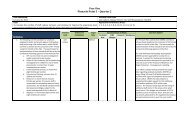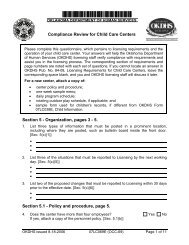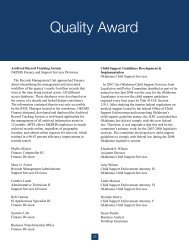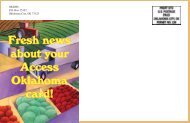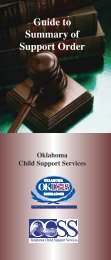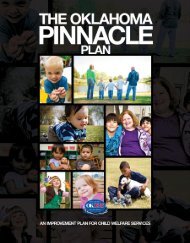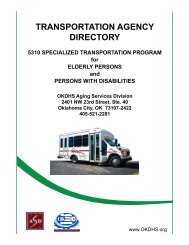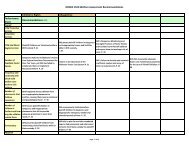SECURITY PLAN DRAFT
SECURITY PLAN DRAFT
SECURITY PLAN DRAFT
You also want an ePaper? Increase the reach of your titles
YUMPU automatically turns print PDFs into web optimized ePapers that Google loves.
• State the number of invalid access attempts that may occur for a given<br />
user ID or access location (terminal or port) and describe the actions<br />
taken when that limit is exceeded.<br />
• Describe the procedures for verifying that all application/system-provided<br />
administrative default passwords have been changed.<br />
• Describe the procedures for limiting access scripts with embedded<br />
passwords (e.g., scripts with embedded passwords are prohibited, scripts<br />
with embedded passwords are only allowed for batch<br />
application/systems).<br />
• Describe any policies that provide for bypassing user authentication<br />
requirements, single-sign-on technologies (e.g., host-to-host,<br />
authentication servers, user-to-host identifiers, and group user identifiers)<br />
and any compensating controls.<br />
• Describe any use of digital or electronic signatures and the standards<br />
used. Discuss the management procedures for key generation,<br />
distribution, storage, and disposal. If digital signatures are used, the<br />
technology must conform with FIPS 186, Digital Signature Standard and<br />
FIPS 180-1, Secure Hash Standard issued by NIST.<br />
D.2 Logical Access Controls<br />
Discuss the controls in place to authorize or restrict the activities of users and<br />
personnel within the application/system. Describe hardware or software features<br />
that are designed to permit only authorized access to or within the<br />
application/system, to restrict users to authorized transactions and functions,<br />
and/or to detect unauthorized activities (i.e., access control lists [ACLs]).<br />
• How are access rights granted? Are privileges granted based on job<br />
function?<br />
• Describe the application/system's capability to establish an ACL or<br />
register.<br />
• Describe how users are restricted from accessing the operating system or<br />
other application/system resources not required in the performance of<br />
their duties.<br />
• Describe controls to detect unauthorized transaction attempts by<br />
authorized and/or unauthorized users. Describe any restrictions to prevent<br />
users from accessing the application/system outside of normal work hours<br />
or on weekends.<br />
• Indicate after what period of user inactivity the application/system<br />
automatically blanks associated display screens and/or disconnects<br />
inactive users. After what period of user inactivity does the<br />
application/system require the user to enter a unique password before<br />
reconnecting?<br />
<strong>DRAFT</strong>



